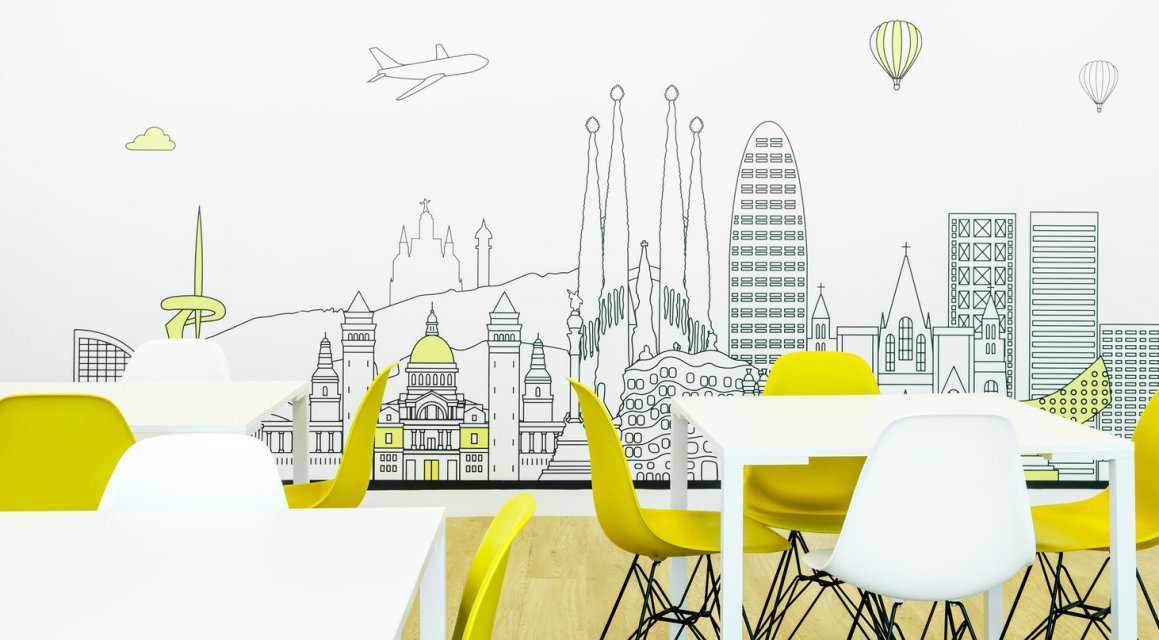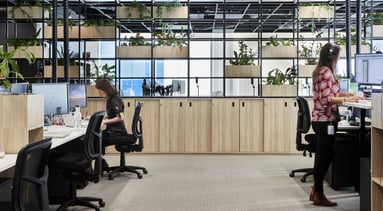
Insights from our Madrid studio on their perspective of workplace design and the direction of the Spanish office market.
We recently caught up with three of our team members from the Madrid studio to hear their thoughts on the local market trends affecting workplace design in Spain. Cristina Martin, Rose Salag, and Carmen Malo Sanz convey their insights below.
Rose Salag, Associate, Business Development

What are the key influences driving the market at the moment?
The market is continually changing with the influence of politics, economics, and the real estate landscape having a significant effect. Ultimately, the client perceptions of what they want from the work environment on a day-to-day basis has changed markedly as the drive for 'smarter' offices increases.
Key influences driving the Spanish market at the moment include strong demand and difficulty searching for high-quality buildings; the interest in the flexibility of space, and the ability to control or adapt these spaces. Wellbeing trends and sustainability certifications have a key focus to ensure longevity and sensitivity to the environment. And interactive digital solutions which touch on big-data and new technology are helping to future-proof property.
The 'new' workplace has been really enabled by technology but that has also brought about the need to balance digital touchpoints with simple, human-centric facilities. Spain is a customer-focused market, so ensuring people are connecting efficiently and have environments that support them, as well as add value, is imperative.
Cristina Martin, Associate, Client Relations

How has 'post-2008' altered perception of workspace in Madrid?
The financial crisis that started in 2007 hit Spain very hard. Market prices were extremely high, and when the bubble exploded, tenants quickly realised that they were not able to fund their rents and some of them had to make significant redundancies.
However, this negative situation gave them an opportunity to reinvent themselves. Since then, some companies have moved to less costly areas of the cities. Many others have reduced the size of their offices, creating more agile workspaces, open plan with less private offices, and they also became more conscious of the importance of the multi-purpose spaces.
Suppliers have also adapted. Companies such as Unispace and others have had to become more creative to give clients solutions in a very efficient way. So what has stemmed from challenging market conditions has in fact driven radical evolution and change, and created a more productive business environment.
Read more about workplace design and changes to the Spanish office market
What do large occupiers find most difficult with the local markets in Spain?
Many occupiers’ struggle to balance cost cutting with strategic goals. Although many occupiers retain a focus on managing the costs of their workplace, when it comes to strategic decision-making, there is a growing emphasis on offsetting this against issues such as staff recruitment and retention. That has really become a critical focus for workplace issues.
90% of occupiers believe now that the workplace is a fundamentally important or critical factor in securing a better team and enhancing their well-being. It varies across sectors, but 67% of the public sector gave focus to factors other than cost when it comes to workplace design. Collaborative spaces, the adoption of agile working practices and co-working spaces are more and more commonplace.
Obviously, the key driver of location-based decision-making is cost. In Spain, the market was lacking space for big occupiers, but new buildings are being built at the moment which are giving companies many more options.
What should large occupiers anticipate when they embark on a Spanish project?
Our advice is the same for occupiers of all sizes that are setting up business in Spain - you need to make sure you get the right people who can assess the best building and location in accordance with your needs. It is also very important to make sure you are compliant with all Spanish regulations and laws.
Finding the right people with experience in different countries, who can understand your requirement and the difficulties that a move like this entails is critical. Somebody who you trust and will help give your business a great start. One important tip for those new to the market: Spain has a lot of sun, so in an office it is a given that all windows have blinds to protect employees from the direct sunshine. Having said that, you can also go enjoy that sun after work!
Carmen Malo Sanz, Designer

What is distinct about the Spanish response to workspace design?
The trends in the Spanish market are changing from conservative workspace design, where enclosed spaces and hierarchies were the principal focus of companies, to more agile environments with open spaces. There has also been a large increase of co-working spaces. Spain is now the third country in Europe in the ranking of shared spaces.
The way society is moving towards more technology-based solutions is helping change the mentality of Spanish companies. This is allowing them to better understand the importance of workspace design and therefore adding further value through workplace strategy and design.
Read more about our favourite co-working spaces and office design in Spain
Are there any common workplace themes across the markets in Spain or is each city very distinct?
Big cities such as Madrid or Barcelona tend to be more innovative and disruptive due to the type of companies investing, but the workplace trends, in general, are the same along the Peninsula and there are also similarities with Portugal.


